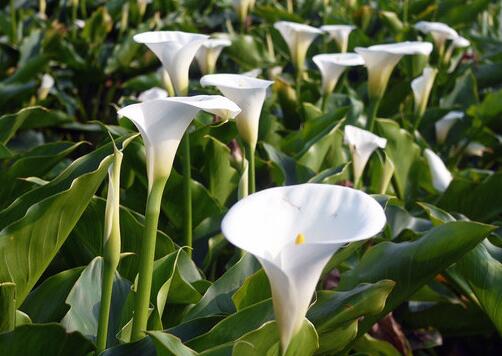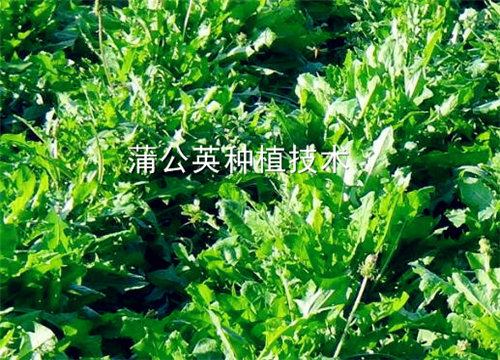Detailed explanation of culture methods and matters needing attention of large-scale foliage plant Amorphophallus
"the coming of spring, quietly release the ambiguous atmosphere, in the season of a hundred flowers in full bloom, you have a fresh and refined poetic flavor." from this song "Sea Taro Love", we can know that the flower "Sea Taro" introduced today is a kind of green plant with fresh and elegant charm. In recent years, more and more people cultivate sea taro. Compared with other flowers, it is not easy to maintain them. Today, let's learn about the culture methods and matters needing attention of sea taro.

I. Culture methods of sea taro
1. Soil requirements for potted plants
First of all, peat soil, river sand and rotten leaf soil are mixed with good soil, and then certain nutrients are added to plant sea taro. After planting, it is necessary to pour through the bottom of the basin and let it be maintained in a ventilated place with semi-shade and astigmatism.
Note: loosen the soil once a month to enhance its soil permeability and drainage. The basin is changed every spring.
2. Keep the basin soil moist in watering
Under the condition of keeping the basin soil moist, the moisture of taro is generally enough, it can be increased appropriately in summer, and can be reduced in autumn and winter. generally, if it is not dry, it will not be watered, because the consumption is not as large as that in spring and summer. Of course, in order to keep the leaves clean and increase air humidity, it is possible to spray leaf water properly.
3. Topdressing in time
Sea taro, as a fertilizer-loving plant, not only needs to meet the growth of base fertilizer, but also needs appropriate additional liquid fertilizer, about 1-2 times a month. Nitrogen, phosphorus and potassium fertilizer is also suitable.
Note that it is not necessary to apply fertilizer if the temperature is too low, and the concentration of fertilizer should not be too much each time. It must be kept thin so as not to burn the roots. Do not contaminate the leaves when fertilizing, so as to avoid the yellowing of the leaves.
4. The optimum growth temperature is 25-28 ℃.
The sea area likes a warm environment, and it can pass the winter smoothly as long as the temperature is not lower than 8 ℃ in winter.
5. Light astigmatism is fine.
As long as the sea area is semi-overcast, it can grow well and is generally maintained in the position of the windowsill. Pay attention to sunscreen in summer, replenish the light in winter, and move to the balcony or outdoors as soon as there is sunshine.
6. Reproduction at the beginning of spring
Generally speaking, after the beginning of spring, the propagation of sea taro will be carried out, and the commonly used method is the method of dividing plants. It should be noted here that the wound should be disinfected and replanted when cutting the root stem. It can take root in about a month, and it is important to avoid light and keep the basin soil moist during the whole process.
II. Matters needing attention in the culture of sea taro
1. Aquaculture sea taro should pay attention to its toxicity: sea taro is a poisonous flower, and the juice of its stems and leaves contain toxins. If you accidentally encounter or accidentally eat, there will be numbness, swelling and pain, so you must pay attention not to break it in the process of maintenance. If you encounter it, wash your hands in time.
2. The sea taro should be changed: the time to change the basin is generally in April of the next year. When changing the basin, we should pay attention to cutting off the diseased and rotten roots, and then reconfigure the nutritious soil for planting. At this time, it is necessary to water the basin soil thoroughly and keep it in a cool and ventilated place for a week.
3. Be careful not to overwater when watering: too much water in the basin soil will cause the root to be unable to breathe and rot, resulting in yellowing of leaves, shedding and even death of the whole plant.
4. Pay attention to whether the sea taro is short of fertilizer: the sea area likes fertilizer, and it is easy to grow slowly due to lack of fertilizer. at this time, we can observe whether the new leaves are light and yellow. if there is this phenomenon, it may be necessary to topdressing.
Through our article, I believe you have some understanding of the breeding methods and matters needing attention of sea taro, so plant a pot of practice hands quickly.
Time: 2019-03-13 Click:
- Prev

Is the money pocket that means auspicious and rich poisonous? What is the breeding method?
Money pocket is also known as round leaf flutong, the leaves are round in shape, like a piece of copper coins. It likes to grow in a warm, humid and sunny environment, can withstand semi-shade, but is not cold-resistant, afraid of drought, and can be kept in a brightly lit room for a long time in the family. It is a very popular potted plant.
- Next

Dandelion planting prospect is good! Have you mastered all the key points of planting techniques?
I remember that when I was young, dandelion was very common in our hometown, especially when its flowers turned white, when the wind blew gently, it would float with the wind, and then sow seeds everywhere in the fields. Grandma used to pull them out directly in order to keep them from interfering with the growth of crops.
Related
- Fuxing push coffee new agricultural production and marketing class: lack of small-scale processing plants
- Jujube rice field leisure farm deep ploughing Yilan for five years to create a space for organic food and play
- Nongyu Farm-A trial of organic papaya for brave women with advanced technology
- Four points for attention in the prevention and control of diseases and insect pests of edible fungi
- How to add nutrient solution to Edible Fungi
- Is there any good way to control edible fungus mites?
- Open Inoculation Technology of Edible Fungi
- Is there any clever way to use fertilizer for edible fungus in winter?
- What agents are used to kill the pathogens of edible fungi in the mushroom shed?
- Rapid drying of Edible Fungi

